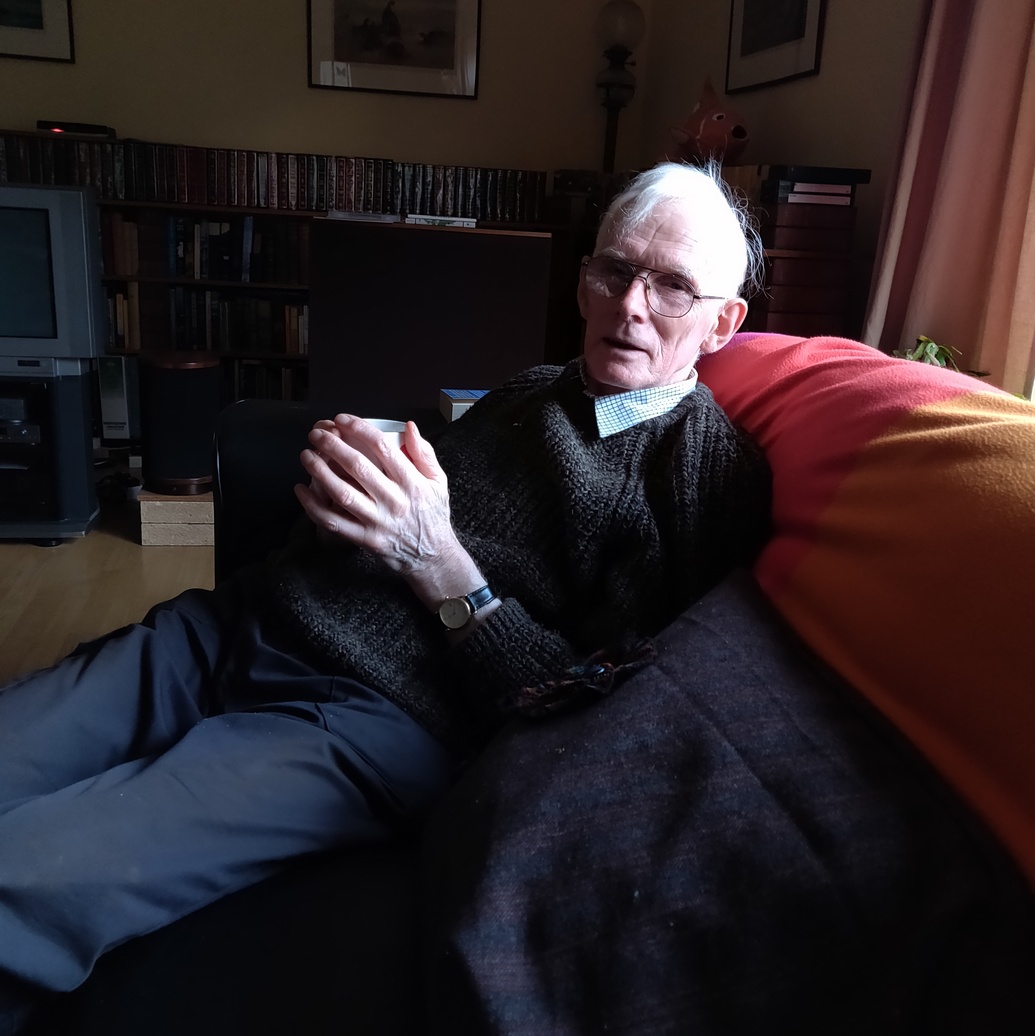Latest
Posted on 14/02/19 in Landscape and Nature
Goldenacre
The view from Goldenacre looks out across Loch Insh to the Feshie hills beyond. John Anderson, who is nearly 80, serves me tea and Victoria sponge beneath the window as he tells me the story of his family. He has discovered an unexpected connection between us, which is why he asked me over. I went to boarding school in the hill-station of Mussoorie in North India and the school – Woodstock, named for a Sir Walter Scott novel – was in the Raj-era cantonment of Landour. John’s mother had been born in India while her doctor father, David Wilson Scotland, was a Lieutenant Colonel in the Indian Medical Service. He shows me a sepia postcard sent from Glasgow to the Scotlands at ‘Church View, Mussoorie, India’ and another addressed to their home back in Colinton, Edinburgh, where they had named the house, ‘Landour’. He knows nothing more about their time in the hill station, but I speculate that Dr Scotland may have served in the British army sanatorium established in Landour in 1827.
It’s a small world. A particularly small world in the village of Kincraig where both John and I live, though I am a relative newcomer, having been here for a mere twelve years. He has been in the area on and off through his youth and for the twenty years since retirement, but laughingly tells me he’ll never be considered ‘local’. When he was born in 1939, his parents were tenant farmers at Banchor Mains, 10 miles south-west of here by Newtonmore, and they moved from there through Lochiel, Loch Rannoch, Invereshie and Strathmashie, graduating at Loch Rannoch from tenancy to landowning.
Years later, when sheep from the local estate were ravaging the Goldenacre garden, John contacted the shepherd, who was the late Donnie Ross, legendary in these parts for his outspoken views on crofting, the environment and anything else to do with land management, but also for treating others with respect. He sent one of his strapping sons to deal with the sheep, but the young man also saw fit to berate the ‘English incomers’ for always complaining. John did not argue, but when the son reported to his father, Donnie told him, in no uncertain terms, “John Anderson’s father gave all his tenants at Strathmashie the right to buy. You go straight back down and apologise.” He did.
John himself never followed in the landowning or farming walk of life, to his father’s disappointment, but did study agriculture in London and joined what was then the Edinburgh and East of Scotland Agricultural College, now part of Scottish Rural College. His chief role was monitoring farm incomes in South East Scotland and covering the fortunes of the potato sector for which he was perhaps better known, having contributed a monthly commentary on it for 23 years without missing a single edition. He challenges me to match that writing record, which shames me into scuttling straight home afterwards to type up my notes.
John’s story, like so many in this area, is one of deep history with the land. I ask him how he feels about it. “I’ve lived in beautiful places all my life,” he says. “At Fassiefern House we had a view of Ben Nevis. But I never climbed it then. People ask me why, but when you had sheep and hill cattle, you only went up the hills if you had to.” When I ask his views about tensions between farming and conservation interests he says, “It’s complicated.” And that’s about the simplest way of putting it. What is clear is John’s own quiet dedication to caring for the landscape as he goes out regularly clearing litter from the village. “I fill a wheelie bin a month from one kilometre of road – can you believe it? Why? Why do people do it?” “Laziness,” I suggest. “Some people just don’t care and can’t be bothered.”
We agree it reflects a loss of connection. A loss of connection with the land, with the animals who are dependent upon it and with the people who call it home. Ultimately, littering also seems to me a loss of connection with a deeper part of ourselves; a part that dwells fully present in our environment, that does not experience it as just a backdrop, or a playground, or indeed a workplace, but as much a part of us as our breath and bones.
The light from the window dies softly in John’s living room, where my feet rest on a one-hundred year old rug from India. (The Asian in me has left my shoes at the door.) Long and lean as a stork, with hair as white as the scant snow on the Feshie hills, John holds his mug in gnarled hands as he tells me of a walk with his late wife, Frances. “We climbed to the pictish fort of Dun da Lahm above Laggan and we could hear the stags roaring in the woods below and the echoes of it across the valley. And she turned to me and said, ‘This would be a good place. You can lay me to rest here.’”
He looks up and smiles, a pattern of light and shadows on his face, and I know why I have come. It is not so much to talk about historic links to India or the local land, but to share time and presence on this passing day; to experience something at the root of what our environment and people so badly need: connection.






